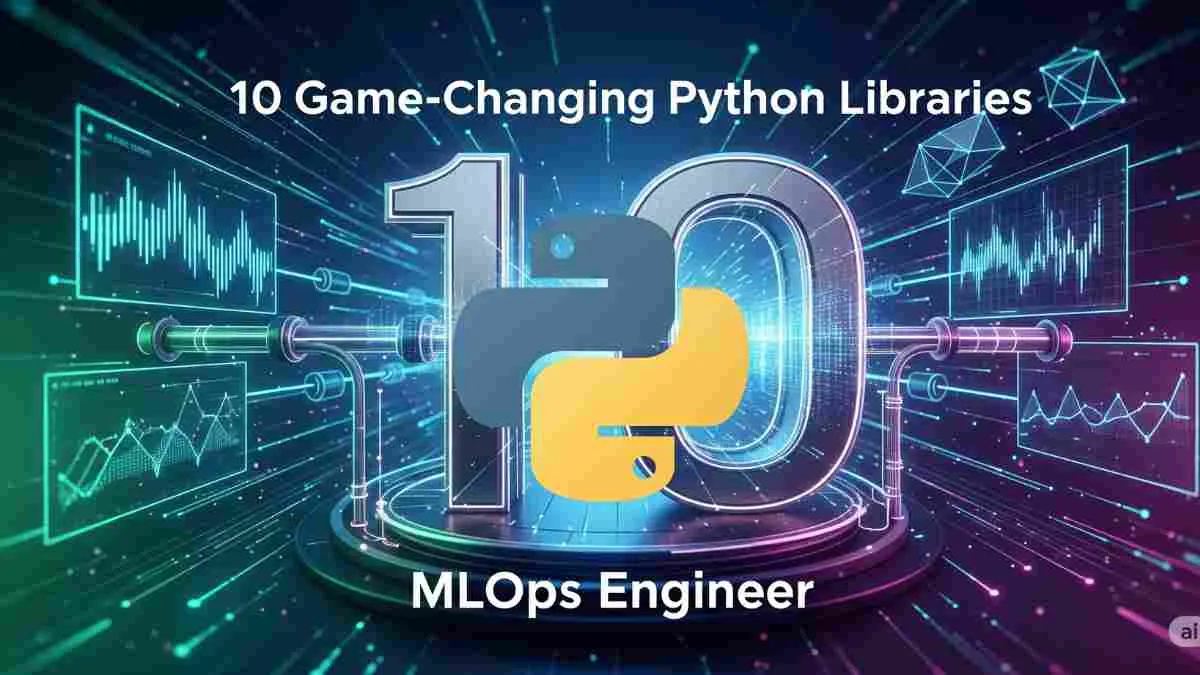If you think building machine learning models is tough, wait until you try deploying and managing them in production! MLOps — short for Machine Learning Operations — is where many ML projects either thrive or fail. The right tools can make the difference between a smooth deployment and a frustrating mess.
In this article, we’re diving into 10 essential Python libraries that make the life of an MLOps engineer a whole lot easier. From experiment tracking to model deployment and monitoring, these tools cover everything you need to keep your ML pipeline healthy and efficient.
Let’s get started!
1. MLflow: Your ML Lab Notebook
What It Fixes: Tracking endless experiments and model runs.
Why It’s Awesome: MLflow acts like your ML journal. It automatically logs model parameters, results, and artifacts. You can even compare experiments side-by-side with zero hassle.
Pro Tip: Works with any ML framework and lets you deploy models with just one command.
👉 MLflow Tutorials and Examples
2. DVC (Data Version Control): Git, But For Data
What It Fixes: Keeping track of large datasets and data transformations.
Why It’s Awesome: Regular Git chokes on big files. DVC tracks data and links it to your code. You can recreate any past experiment just by switching to the right Git commit.
Pro Tip: Works seamlessly with Git, cloud storage, and makes your pipelines reproducible.
3. Kubeflow: Tame Kubernetes Like a Pro
What It Fixes: Running scalable ML workflows without deep Kubernetes knowledge.
Why It’s Awesome: Kubeflow simplifies Kubernetes for ML engineers. It helps with training, orchestration, and model serving without touching complex YAML files.
Pro Tip: Comes with Jupyter Notebook support and manages compute resources automatically.
4. Prefect: Orchestrate Like a Boss
What It Fixes: Complicated and rigid data pipelines.
Why It’s Awesome: Prefect is simpler and more Pythonic than Airflow. It takes care of retries, caching, and error handling out of the box.
Pro Tip: Great for teams looking for modern, low-boilerplate workflow orchestration.
5. FastAPI: Deploy Models at Warp Speed
What It Fixes: Turning models into production-ready web services.
Why It’s Awesome: FastAPI is fast, flexible, and developer-friendly. With just a few lines of code, your model becomes an API. It even auto-generates documentation!
Pro Tip: High-performance and great for real-time inference services.
6. Evidently: Keep an Eye on Model Health
What It Fixes: Model decay and performance drift.
Why It’s Awesome: Evidently shows how your model’s predictions change over time. It helps detect when your model needs retraining before things go south.
Pro Tip: Comes with dashboards, prebuilt metrics, and drift alerts.
👉 Getting Started with Evidently
7. Weights & Biases (W&B): Team Up on Experiments
What It Fixes: Team collaboration and hyperparameter chaos.
Why It’s Awesome: W&B logs experiments, visualizes metrics, and supports hyperparameter tuning. It’s perfect for teams sharing models and insights.
Pro Tip: Works with all major ML frameworks and offers team dashboards.
8. Great Expectations: Your Data’s Gatekeeper
What It Fixes: Bad or inconsistent data sneaking into your pipeline.
Why It’s Awesome: Define what “good data” looks like and catch issues early. It’s like writing unit tests for your datasets.
Pro Tip: Auto-profiles datasets and gives you detailed data quality reports.
9. BentoML: Deploy Models Anywhere
What It Fixes: Different deployment platforms needing different formats.
Why It’s Awesome: BentoML packages models for Docker, Kubernetes, serverless — you name it. It standardizes deployments and optimizes models for production.
Pro Tip: Supports all major ML frameworks and multiple deployment targets.
10. Optuna: Tune Like a Genius
What It Fixes: Time-wasting manual hyperparameter tuning.
Why It’s Awesome: Optuna uses smart algorithms to find the best hyperparameters fast. It prunes weak trials early and supports parallel searches.
Pro Tip: Offers great visualizations to help understand what’s working.
🔚 Wrapping Up
Mastering MLOps is all about using the right tools for the job. These 10 libraries tackle everything from data versioning and experiment tracking to deployment and monitoring.
You don’t need to use all of them at once — pick the 3–5 that match your current workflow challenges, and expand from there as your team grows.
Pro Tip: Most successful ML teams combine multiple tools from this list into a smooth, well-oiled pipeline.
Happy building, deploying, and scaling! 🚀
Also Read: How Autonomous AI Agents Will Change Business Forever











